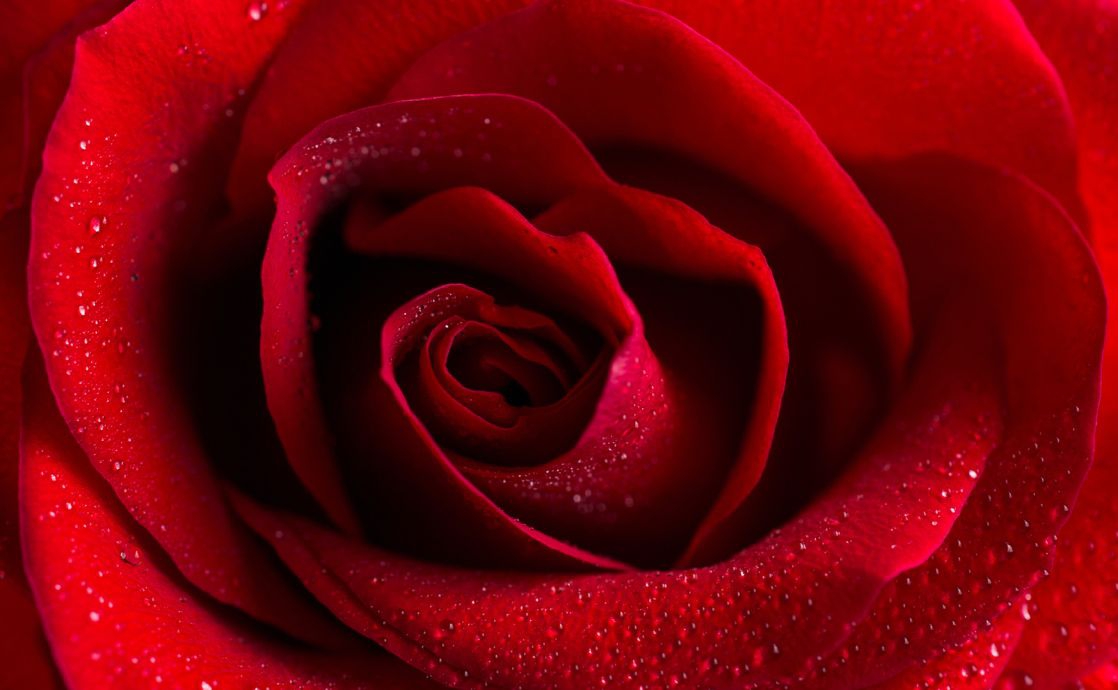The views expressed in our content reflect individual perspectives and do not represent the authoritative views of the Baha'i Faith.
My father’s sister has a penchant for growing things. At every house she’s lived in, she’s grown a rose garden in the front.
She spends time carefully tending to her roses, and it does not go unnoticed. To this day, I can’t think of roses without also thinking of her.
Roses are one of the most easily recognizable flowers, even in their diversity. There are at least 100 different species of roses, and thousands of hybrids. This ancient flower has symbolized various things, from love to war, from different places to a range of emotions. Its varied colors carry different connotations: yellow roses symbolize friendship, peach-colored roses represent admiration or appreciation, and, most famously, red roses convey a sense of romantic love.
The earliest trace of the rose dates back to a 35-million-year-old fossil, and the flower was used in Iraq as far back as 2000 BC for ornamental purposes and to produce rosewater and perfumes. Roses can be found all over the world and have been used throughout history as currency, for displays of beauty, for medicinal purposes, and for their enchanting aroma.
Roses are mentioned more than any other flower in the Baha’i writings. The way Baha’u’llah describes roses, it is as though they are a source of divine inspiration. His frequent use of the rose as a metaphor encourages us to take in what roses have to offer—beauty, fragrance and pure energy—and internalize it.
One way we can explore their spiritual potency is to emulate their growth process in the way we deepen ourselves and build community. While roses have the capacity to grow wild, a rose garden that is healthy and beautiful requires immense care. A garden full of roses embodies the Baha’i teachings on oneness, unity in diversity, and the love of God:
Associate with each other, think of each other, and be like a rose garden. Anyone who goes into a rose garden will see various roses, white, pink, yellow, red, all growing together and replete with adornment. Each one accentuates the beauty of the other. Were all of one color, the garden would be monotonous to the eye. If they were all white or yellow or red, the garden would lack variety and attractiveness; but when the colors are varied, white, pink, yellow, red, there will be the greatest beauty. Therefore, I hope that you will be like a rose garden. Although different in colors, yet—praise be to God!—you receive rays from the same sun. – Abdu’l-Baha, The Promulgation of Universal Peace, p. 427.
If the hearts be touched with the heat of the love of God, that territory will become a divine rose garden and a heavenly paradise, and the souls, even as fruitful trees, will acquire the utmost freshness and beauty. – Abdu’l-Baha, Tablets of the Divine Plan, p. 28.
Just as the Baha’i teachings use a rose garden to describe an ideal, loving community, they also liken it to the human heart. We are encouraged to tightly cling to the “rose of love” within this garden of our heart. This love refers not to romantic love, but the kind of spiritual love that characterizes relationships that are imbued with virtuous qualities:
O FRIEND! In the garden of thy heart plant naught but the rose of love, and from the nightingale of affection and desire loosen not thy hold. Treasure the companionship of the righteous and eschew all fellowship with the ungodly. – Baha’u’llah, The Hidden Words, p. 23.
Watching how my aunt tenderly cares for her rose garden has gifted me a beautiful metaphor for how I should cultivate relationships with others and develop my spiritual qualities out of love. This metaphor allows me to explore the intentions behind the choices I make on a day-to-day basis: I begin to think of what I do in terms of whether it helps or hurts the growth of the garden within my heart.
Baha’u’llah wrote:
In the Rose Garden of changeless splendor a Flower hath begun to bloom, compared to which every other flower is but a thorn, and before the brightness of Whose glory the very essence of beauty must pale and wither. Arise, therefore, and, with the whole enthusiasm of your hearts, with all the eagerness of your souls, the full fervor of your will, and the concentrated efforts of your entire being, strive to attain the paradise of His presence, and endeavor to inhale the fragrance of the incorruptible Flower, to breathe the sweet savors of holiness, and to obtain a portion of this perfume of celestial glory. – Gleanings from the Writings of Baha’u’llah, pp. 320-321.
For a person to be likened to a rose—as we all are in the Baha’i writings—is incredibly powerful, given the spiritual weight of this flower.
This reminds me of an instance in which Abdu’l-Baha poignantly singled out one person as a rose. When Abdu’l-Baha was in New York, in 1912, walking near the Bowery Mission with some of his companions—some from the U.S. and others from foreign countries—this group of people stood out from everyone else in the neighborhood. Passers by on the streets were staring at them and some children began making fun of Abdu’l-Baha and the Baha’is who accompanied him.
One of them, a woman named Mrs. Kinney, was one of Abdu’l-Baha’s hosts during his trip to the States. She stopped to explain to the boys that Abdu’l-Baha was a holy man who had suffered a great deal in order to share his message with the people of the world. She then invited the children to visit her home where Abdu’l-Baha was staying so they could meet him.
To her surprise, at the specified time and date, the children showed up at her house, where Abdu’l-Baha welcomed them all with smiles. The last child to walk through Mrs. Kinney’s door was a young black boy. When Abdu’l-Baha saw this boy, his face lit up and he loudly said “here is a black rose!” Needless to say, these few words had a profound effect:
The other boys looked at him with new eyes. I venture to say that he had been called a black-many things, but never before a black rose. This significant incident had given to the whole occasion a new complexion. The atmosphere of the room seemed now charged with subtle vibrations felt by every soul. The boys, while losing nothing of their ease and simplicity, were graver and more intent upon Abdu’l-Bahá, and I caught them glancing again and again at the colored boy with very thoughtful eyes. To the few of the friends in the room the scene brought visions of a new world in which every soul would be recognized and treated as a child of God. I thought: What would happen to New York if these boys could carry away such a keen remembrance of this experience that throughout their lives, whenever they encountered any representatives of the many races and colors to be found in that great city, they would think of them and treat them as “different colored flowers in the Garden of God.” – Howard Colby Ives, Portals to Freedom, p. 64-65.
Throughout his life, Abdu’l-Baha continually chose to be an example of how we can celebrate diversity. From his writings about rose gardens to the excitement he displayed at the sight of a child who was different than the rest, I believe he was encouraging us to see each other as roses of love.
















Comments
Sign in or create an account
Continue with Googleor